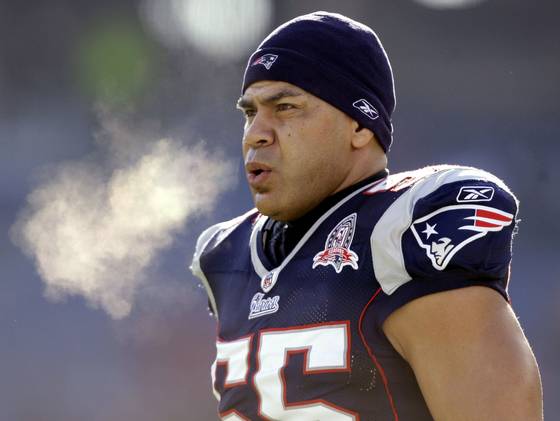
Popular former NFL star linebacker Junior Seau committed suicide last May. (Photo: Charles Krupa, AP) Star linebacker Junior Seau had a degenerative brain disease when he committed suicide last May, the National Institutes of Health told The Associated Press on Thursday. Results of an NIH study of Seau's brain revealed abnormalities consistent with chronic traumatic encephalopathy (CTE). ABC News/ESPN broke the story on Good Morning America, including interviews with Seau's former wife, Gina, and Seau's oldest son, Tyler, 23. The NIH conducted a study of three unidentified brains, one of which was Seau's. It said the findings were similar to autopsies of people "with exposure to repetitive head injury." Seau was an outstanding linebacker for 20 NFL seasons before retiring in 2009. He died of a self-inflicted shotgun wound. Gina Seau said the family was told the diisease came from "a lot of head-to-head collisions over the course of 20 years of playing in the NFL. And that it gradually, you know, developed the deterioration of his brain and his ability to think logically." Seau joins a list of several dozen football players who had CTE. Boston University's center for study of the disease reported last month that 34 former pro players and nine who played only college football suffered from CTE. "I think it's important for everyone to know that Junior did indeed suffer from CTE," Gina Seau told ABC News. "It's important that we take steps to help these players. We certainly don't want to see anything like this happen again to any of our athletes." Dr. Russell Lonser, the former chief of surgical neurology at the NIH, helped coordinate the study. He said three experts independently arrived at the same conclusion: that the signs of CTE present included the presence of an abnormal protein called "tau" that forms neurofibrillary tangles, effectively strangling brain cells. The NFL currently is facing a federal lawsuit representing more than 4,000 former league players claiming the NFL refused to acknowledge the link between brain damage and the sport,, even after CTE was found in the former players. The Seau family has not decided about joining the lawsuits. Seau is not the first former NFL player who killed himself, then was found to have CTE. Dave Duerson and Ray Easterling are others. Duerson, a former Chicago Bears defensive back, left a note asking for his brain to be studied for signs of trauma before shooting himself. His family filed a wrongful death suit against the NFL, claiming the league didn't do enough to prevent or treat the concussions that severely damaged his brain. Easterling played safety for the Atlanta Falcons in the 1970s. After his career, he suffered from dementia, depression and insomnia, according to his wife, Mary Ann. He committed suicide last April. Mary Ann Easterling is among the plaintiffs who have sued the NFL. Story Highlights
Source : http://www.usatoday.com/story/sports/nfl/2013/01/10/junior-seau-brain-disease/1822603/